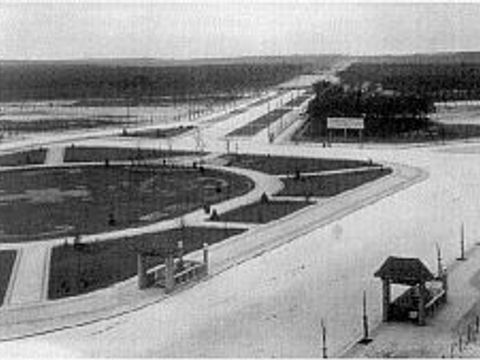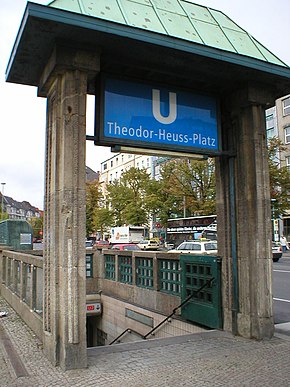|
| | Author | Message |
|---|
Caro
Censura

Posts : 1522
Join date : 2012-01-09
 |  Subject: Tunnels under the city Subject: Tunnels under the city  Mon 21 Jan 2013, 22:21 Mon 21 Jan 2013, 22:21 | |
| In the summertime when the politicians have gone on holiday and we are spared their daily antics and constant concerns about where our country’s next dollar is going to come from, the newspaper journalists have time to write about interesting things. Thus one of our pages in the last month was devoted to tunnels under the city of Dunedin. A lovely full page of little-known history and sort of archaeology.
Underneath the shops and streets are apparently a whole range of tunnels put to various uses. (Dunedin, or any New Zealand city, doesn’t have an underground transport system.) The city’s brick sewers ‘remain in impressive condition – their brick arches and tunnels big enough to drive a small car along in places – despite sections serving the city for up to 150 years.’ The oldest sewers, now used just for stormwater, are maintained by a team of five and health and safety rules mean they are the only ones allowed down usually (though two journalists were able to go down in 2005). They smell of alcohol, being below a nearby brewery. Underneath could be heard cars rattling over manhole covers, and trains, and water when it began raining (and signalled time to get out). "The sewers were among the engineering marvels of their day, and such was the quality of their construction, some of them were likely to still be in use another century from now. They look like they are about ten years old."
Another sewer built in 1900 collected the city’s effluent. And the remains of Dunedin’s underground conveniences – public toilets that used to dot the central city, with staircases leading down below ground are likely to be still buried underneath renovations. Did all cities have these underground toilets – just for men’s urinals, I think? They were part of my city of Invercargill and seemed to be situated right in the centre of town. But I don’t know if they were a general style throughout the world or a New Zealand thing. You used to see a constant stream (not perhaps the best choice of word here) of men disappearing down them, a bit of mystery and interest to a young child from the country.
Other tunnels stem from WWII when bomb shelters were built, many of them still intact. Some old engineering drawings depicting plans to build underground bunkers with space for up to 80 people are around but it is not known if they were built. "This sort of history is lost." "One shelter built in 1941, under a Bond St building built in 1901, was used last year for the launch of a Dunedin fashion label. It still has some of its original features, including a water reticulation system and shelving for rations."
Some of the tunnels were used for practical purposes of shifting goods and people. Under the brewery is a tunnel built in 1898 and used by workers "to roll casks of beer from the brewery along rails to the cellar, while pipes running through it carried well water and malt back the other way. It fell into disuse from the 1940s... and was found full of brewery clutter, which meant it was kept off the brewery’s official tour."
Others were built between the hospital and the nurses’ home in the 1960s, but weren’t popular, so an overbridge was made. "I don’t know if the nurses were spooked by it, or they just thought it was too inconvenient, but instead they kept on dashing across the road." A tunnel for another hospital built in 1957 is however still used by nurses.
I shan’t be rushing to check out Dunedin’s underground but do find it fascinating that we are walking on top of so many structures we are unaware of. |
|   | | nordmann
Nobiles Barbariæ

Posts : 7223
Join date : 2011-12-25
 |  Subject: Re: Tunnels under the city Subject: Re: Tunnels under the city  Tue 22 Jan 2013, 09:14 Tue 22 Jan 2013, 09:14 | |
| A city's underworld can be absolutely fascinating. Two that I have enjoyed visiting were in Seattle and in Berlin. Seattle's came about when there was a great revampment of the Pioneer Square area in the late 19th century. For a period new buildings built after the great fire of 1889 adhered to the old street levels. Then, when the streets were quite literally raised by several metres in places what had been the streetfront became basements to what remained above the new level. In doing so whole sections of old streetfront (and indeed street) were preserved underground, sometimes with furniture and equipment still in place where it had been abandoned by the quite literally upwardly mobile owners. Access to the area by conducted tour has only been available since the underground city was "rediscovered" during the 1960s.
In Berlin I was lucky enough to be allowed permission to accompany a university archeological team in the early 1990s who had exclusive access to a maze of wartime bunkers under Unter den Linden. Since then even more of these have been gradually opened and explored, exposing on the way often pristine fittings, signs and murals from the period. There is understandable caution on the part of the authorities regarding public access, and not just for health and safety reasons, but I believe some of these have now been made available for historical tours of the city. Under Tempelhof airport alone over 40 kilometres of tunnels and bunkers were built during the Nazi period - including an entire wartime aircraft factory which was fully operational right up to the last weeks of the war. Another extremely long network linked Hitler's infamous bunker to the Spree river several kilometres away and was used as a primary escape route for his closest henchmen and staff during the Russian assault. Parts of this are still in remarkably good condition. |
|   | | Temperance
Virgo Vestalis Maxima

Posts : 6895
Join date : 2011-12-30
Location : UK
 |  Subject: Re: Tunnels under the city Subject: Re: Tunnels under the city  Tue 22 Jan 2013, 09:34 Tue 22 Jan 2013, 09:34 | |
| Liverpool had a "mad mole" - a chap called Williamson. He dug out a maze of tunnels in the Edge Hill district of the city. No one knows why he did this - but he could well have been a bit of a religious nut who thought the end of the world was nigh. But perhaps he did it just for fun - or to get away from his wife at weekends. http://en.wikipedia.org/wiki/Williamson_Tunnelshttp://news.bbc.co.uk/1/hi/england/2342183.stmDescend into the maze of tunnels built under Liverpool by 19th century eccentric businessman Joseph Williamson.
 [/size] [/size] |
|   | | Meles meles
Censura

Posts : 5122
Join date : 2011-12-30
Location : Pyrénées-Orientales, France
 |  Subject: Re: Tunnels under the city Subject: Re: Tunnels under the city  Tue 22 Jan 2013, 09:54 Tue 22 Jan 2013, 09:54 | |
| This is a topic dear to my heart. Whilst at universtity in London and for many years after I was a member of Imperial College Caving Club. Our equipment store was, aptly, located in a warren of old victorian cellars under the Union Building, next to the Albert Hall. At Imperial there were long standing rumours of there being a network of tunnels linking all the institutions of 'Albertopolis', possibly even extending to Kensington Palace. Everyone knew of them - but very few actually knew them. They were of course all strictly out of bounds.
But we were the Caving Club, and so obviously of the subterranean bent, and had for many years been gradually discovering and charting this network outwards from our underground storeroom. While I was there we discovered several more entry points and had managed to travel underground from the cellars under the Albert Hall, under Imperial College and southwards to storerooms under the Science Museum, and eastwards under Exhibition Road to under the north side of the Victoria & Albert Museum.
The 'tunnels' were a mix of old Victorian brick cellars, abandoned tiled pedestrian underpasses, WW2 civil defence works, and modern concrete conduits carrying heating pipes and power/computer links. In some places they went down three stories below street level and could be from several metres wide to narrow 'squeezes' and low, flat-out crawls. In places these hidden tunnels linked with some well-known bits eg. the current pedestrian tunnel running north from South Kensington Tube station to the museums is now blocked off at the Science Museum end but does actually continue northwards towards the Albert Hall (it's supposed to have once gone all the way there but we found it blocked by the deep foundations of the Mechanical Engineering Dept. and the basement of Exhibition Road Post Office). In later years I know that others from the club managed to get from this network into the basement of the 90m tall Queen's Tower (the only remaining bit of the old Imperial Institute - also strictly out of bounds. They then, using caving/climbing techniques (a maypole, bolting platform and SRT for those who understand these things) climbed up a 20m vertical ventilation shaft to access the tower proper, and flew a skull-and-crossbones flag from the summit flagpole on College Commemoration Day. Thankfully none of us ever got caught. I would expect in these days of heightened security such access is no longer possible - but I'm not so certain - it was never easy even then, and generally people, even those in authority, tend to overlook and forget things they cannot readily see.
This is just a small, far from unique, corner of London so I'm sure it's like that all over the city. It does make you wonder what's hidden and forgotten, especially under the older parts.
Of more general interest a great book is "London under London" by Richard Trench and Ellis Hillman, first printed 1984 and reprinted many times since.
(Editted after I pressed 'send' too soon.)
Last edited by Meles meles on Tue 22 Jan 2013, 11:49; edited 1 time in total |
|   | | nordmann
Nobiles Barbariæ

Posts : 7223
Join date : 2011-12-25
 |  Subject: Re: Tunnels under the city Subject: Re: Tunnels under the city  Tue 22 Jan 2013, 11:17 Tue 22 Jan 2013, 11:17 | |
| I've long been a fan of this website documenting the disused, abandoned or demolished sections of the London tube network. It might be something that appeals to you too, MM. http://www.abandonedstations.org.uk/Also this (French) map of the actual routes the underground takes is today a very rare sight - we are all so used now to the classic schematic design that Harry Beck came up with in 1931 that we tend to picture the locations and distances between stations in our heads more or less in keeping with his stylised plan. To see the actual sprawl of spaghetti as it really is can be quite a surprise. http://carto.metro.free.fr/cartes/metro-london/ |
|   | | Meles meles
Censura

Posts : 5122
Join date : 2011-12-30
Location : Pyrénées-Orientales, France
 |  Subject: Re: Tunnels under the city Subject: Re: Tunnels under the city  Tue 22 Jan 2013, 12:14 Tue 22 Jan 2013, 12:14 | |
| Yes that map is very, very interesting:
A propos of my comments about Albertopolis one should note that no London Tube lines cross either Kensington Gardens nor Hyde Park. But I would have thought that these open areas would have been ideal routes for underground train line construction with minimal disturbance or cost.
I don't want to get into the realms of conspiracy theories but I do recall that a fellow Imperial caver, who was reading geophysics, had said how they were once doing some practice seismic mapping - you know the thing where you lay out a line of sensors and then create an underground shockwave and record the waves reflected back from any underground structures etc. - and he was convinced that they'd located a very big, regular structure deep under the park, just to the north of the Albert Memorial.
But as I say no Tube lines cross the area, neither is there any underground carpark nor other known subterranean structure. Maybe it's part of old WW2 civil defences, but although there were numerous anti-aircraft batteries here, I think they were all located in Hyde Park, Kensington Gardens and in particular the area around the Albert Memorial itself was entirely given over to allotments.
All Tube lines seem to go very carefully around Kensington Gardens and Hyde Park, yet this is the biggest single block of open land in the capital. But Tube lines seem to cross Green Park, Regent's Park, St James' Park quite readily. So why do no Tube lines cross Kensington Gardens and Hyde Park?
|
|   | | nordmann
Nobiles Barbariæ

Posts : 7223
Join date : 2011-12-25
 |  Subject: Re: Tunnels under the city Subject: Re: Tunnels under the city  Tue 22 Jan 2013, 13:51 Tue 22 Jan 2013, 13:51 | |
| |
|   | | Caro
Censura

Posts : 1522
Join date : 2012-01-09
 |  Subject: Re: Tunnels under the city Subject: Re: Tunnels under the city  Tue 22 Jan 2013, 20:50 Tue 22 Jan 2013, 20:50 | |
| - Quote :
- we are all so used now to the classic schematic design that Harry Beck came up with in 1931 that we tend to picture the locations and distances between stations in our heads more or less in keeping with his stylised plan
We mostly travel by tube when in London, but we realised last time that sometimes we were using the tube to get from one station to another when they were barely a block away by foot. We did have to discover more of the top layer of London when I refused to use the Covent Garden station, not being keen on immensely over-crowded ghastly old lifts. |
|   | | Vizzer
Censura

Posts : 1854
Join date : 2012-05-12
 |  Subject: Re: Tunnels under the city Subject: Re: Tunnels under the city  Sun 28 Aug 2022, 20:43 Sun 28 Aug 2022, 20:43 | |
| - Meles meles wrote:
- All Tube lines seem to go very carefully around Kensington Gardens and Hyde Park, yet this is the biggest single block of open land in the capital. But Tube lines seem to cross Green Park, Regent's Park, St James' Park quite readily. So why do no Tube lines cross Kensington Gardens and Hyde Park?
That’s a very good question. As you suggest, many underground railways were built following the routes of existing roads to minimize any possible damage to buildings during construction and the weakening of foundations from the subsequent rumbling of passing trains. The digging of a tunnel under a park, therefore, would seem to be an ideal alternative. There were indeed many compensation claims which needed to be settled by the early underground railway companies such as the Metropolitan and the District particularly since their tunnels were shallow and generally used the cut-and-cover method during construction. The orientation of Hyde Park, however, is east to west and there was no real demand for a line bisecting the park north to south (or even north-west to south-east or south-west to north-east). The existing roads, north and south of the park (i.e. where there were potential passengers to use the railway) sufficed. Also, the existing West London Railway linked Willesden Junction to Clapham Junction overland west of Holland Park, so a parallel railway under Hyde Park would have been superfluous to requirement. It also has to be appreciated that Kensington was still suburban at that time. The builders of the underground railways knew that the public parks (Holland Park, Kensington Gardens, Hyde Park, Green Park and St James’s Park etc) were never going to be built on, so they were planning not just for the current demand of the 1860s but anticipating (correctly) the huge growth in the metropolitan conurbation in the years to come. That is, on unbuilt land which was not designated as parkland. Such speculation is common in urban transport planning. In the 20th century, the construction of Berlin’s Untergrundbahn (U-Bahn), for instance, offered a classic case study of this:  (Berlin’s Reichkanzlerplatz in 1907 with ornamental garden in the square, saplings planted along the newly laid-out boulevards and even canopied entrances to the U-Bahn station in the foreground – but no buildings.)  (The same square today, now called Theodor Heuss Platz, viewed from slightly to the left. The original twin entrances to the U-Bahn station are at right.)  (Ground-level view of one of the station entrances designed in the Wilhelmine style by Swedish architect Alfred Grenander. Note the attention to detail with the green gate at the top of the stairs having Art Nouveau carrés matching those around the top of the stairwell barrier wall along with a swing-match moveable handrail. The railway planners were obviously supremely confident in the future prospects of both the network and the city.) P.S. London Underground’s Elizabeth Line (opened in May this year) passes under the north-east corner of Hyde Park although admittedly quite a way from the Serpentine dam and a long way from the Albert Memorial. |
|   | | Sponsored content
 |  Subject: Re: Tunnels under the city Subject: Re: Tunnels under the city  | |
| |
|   | | |
Similar topics |  |
|
| | Permissions in this forum: | You cannot reply to topics in this forum
| |
| |
| |
